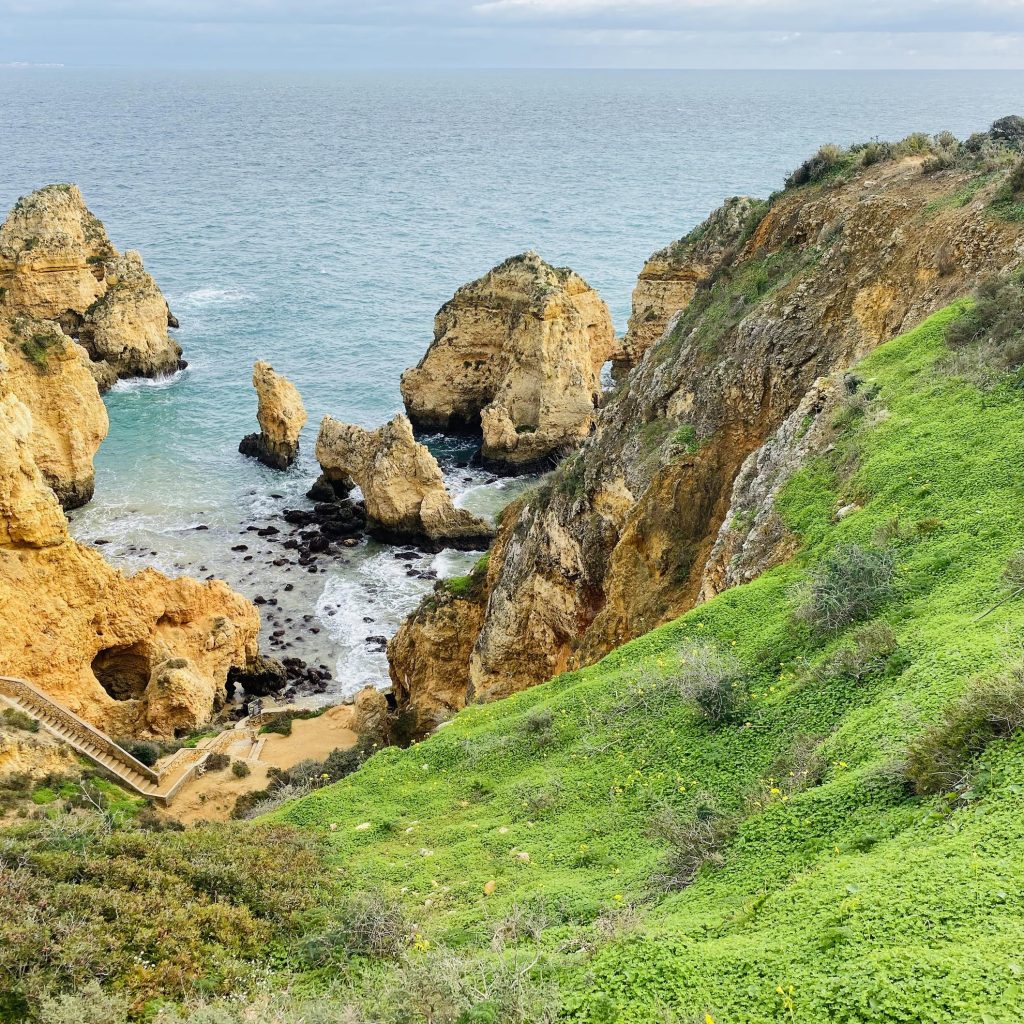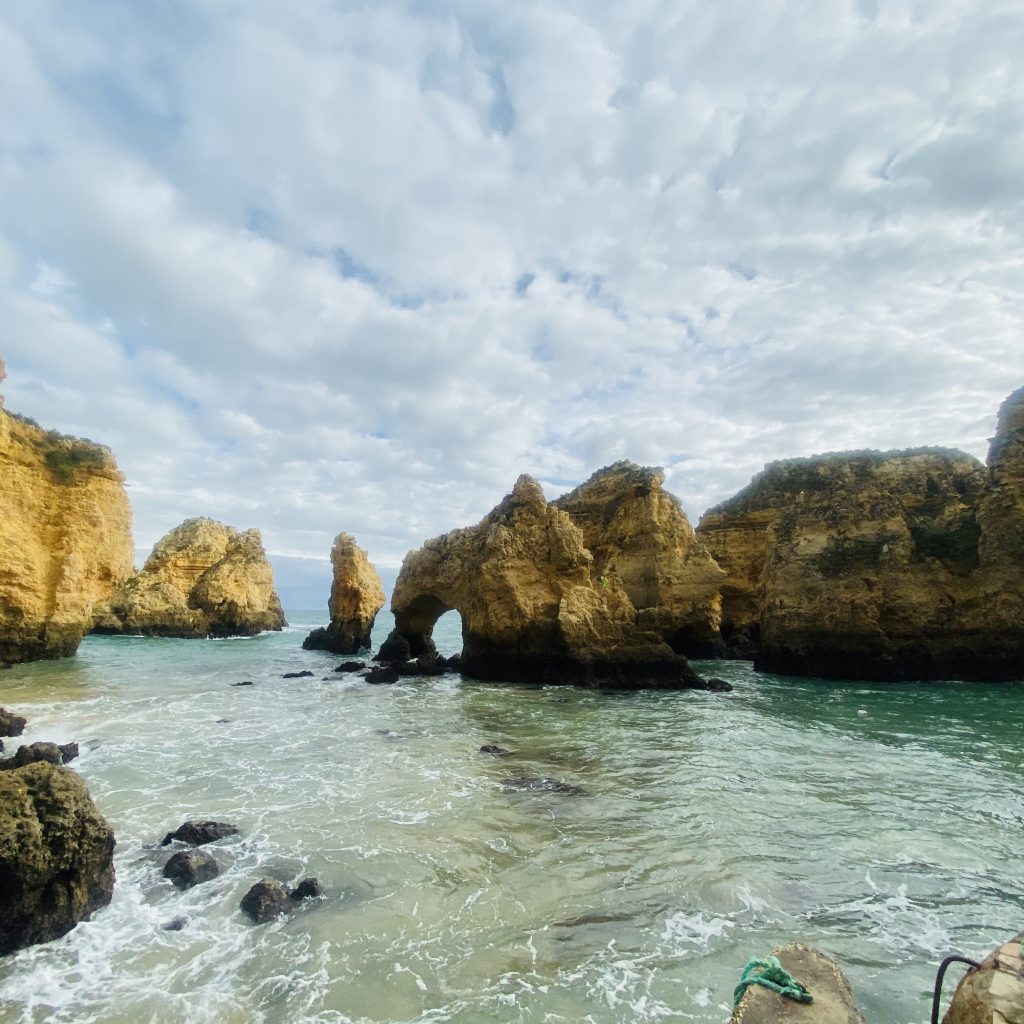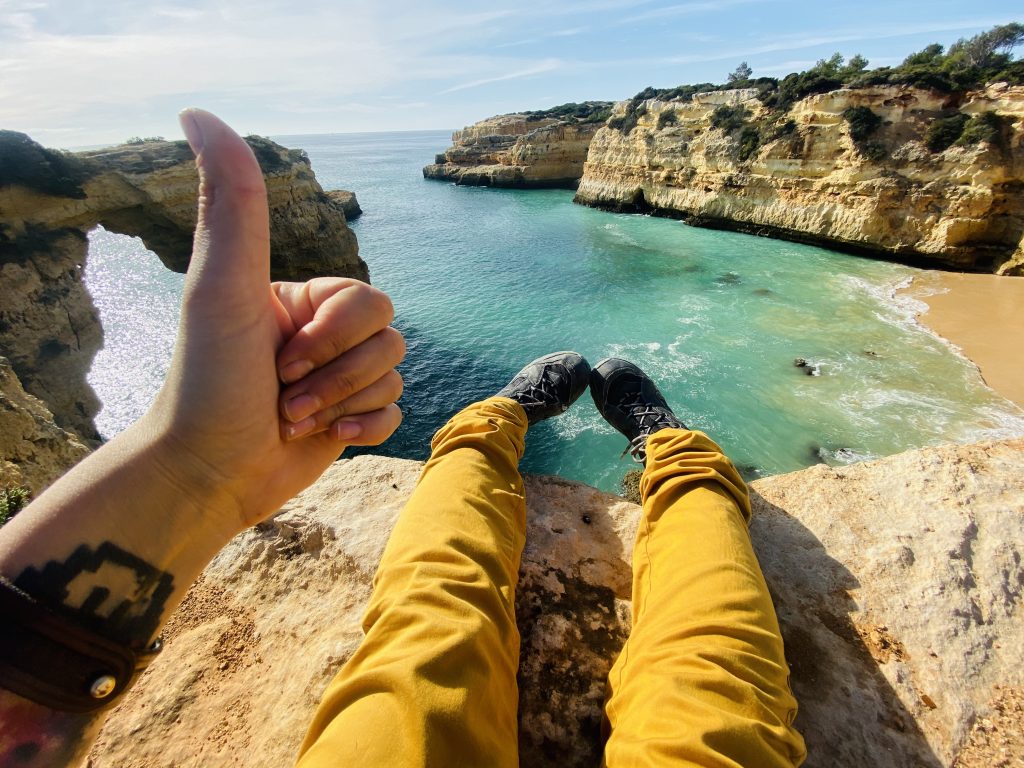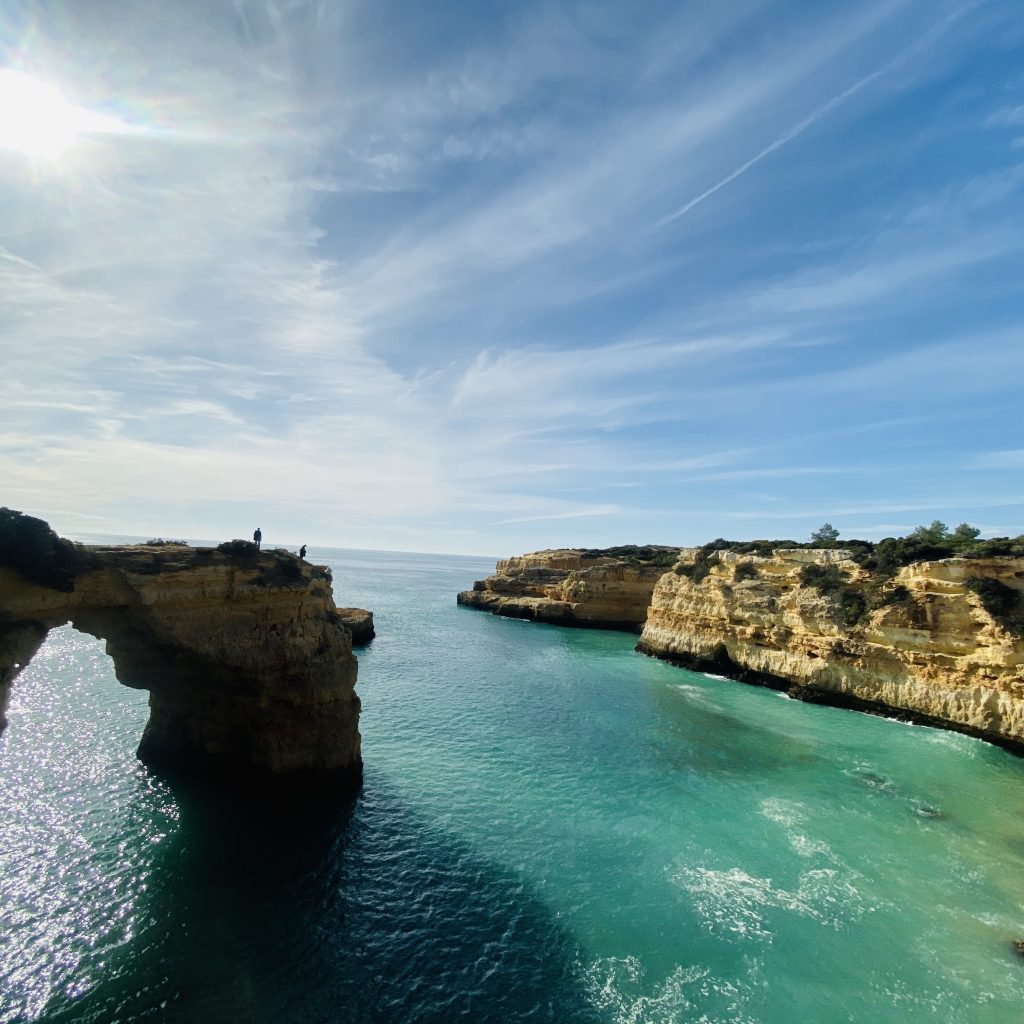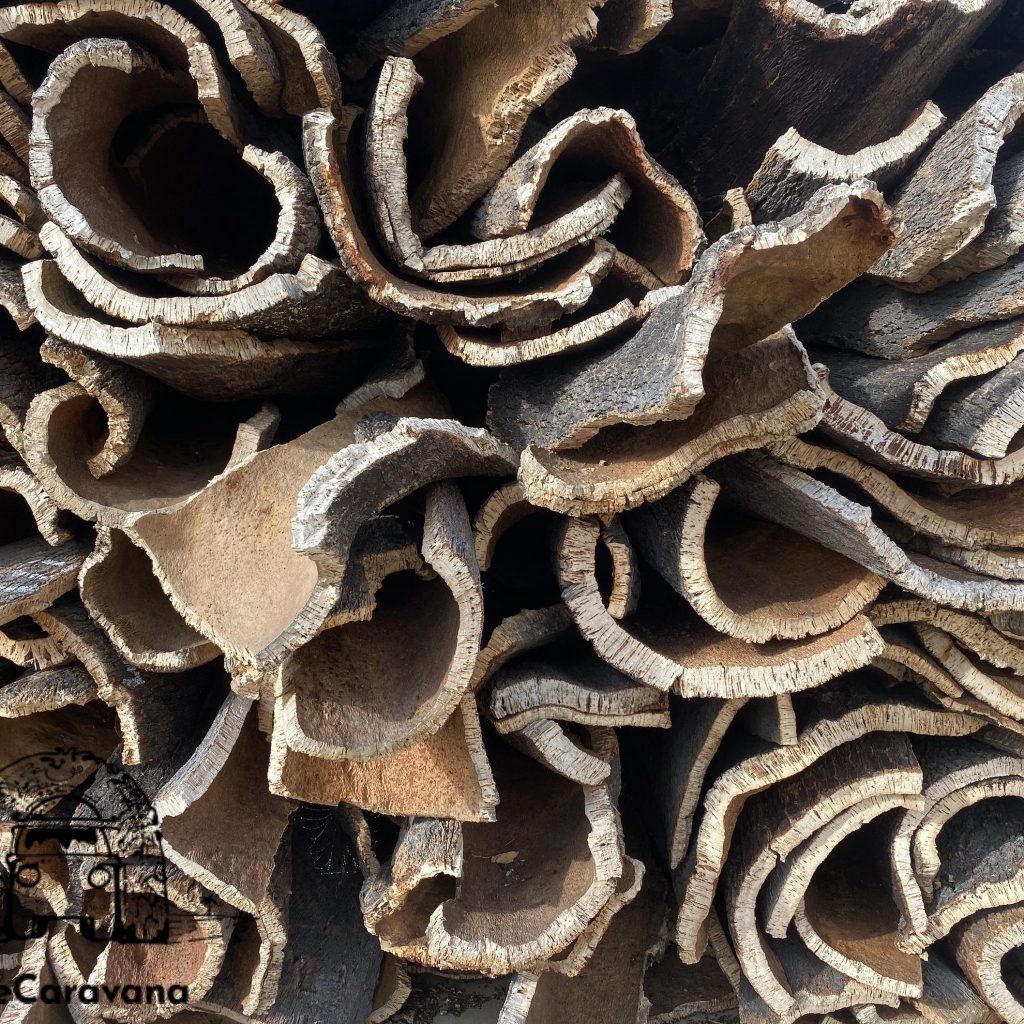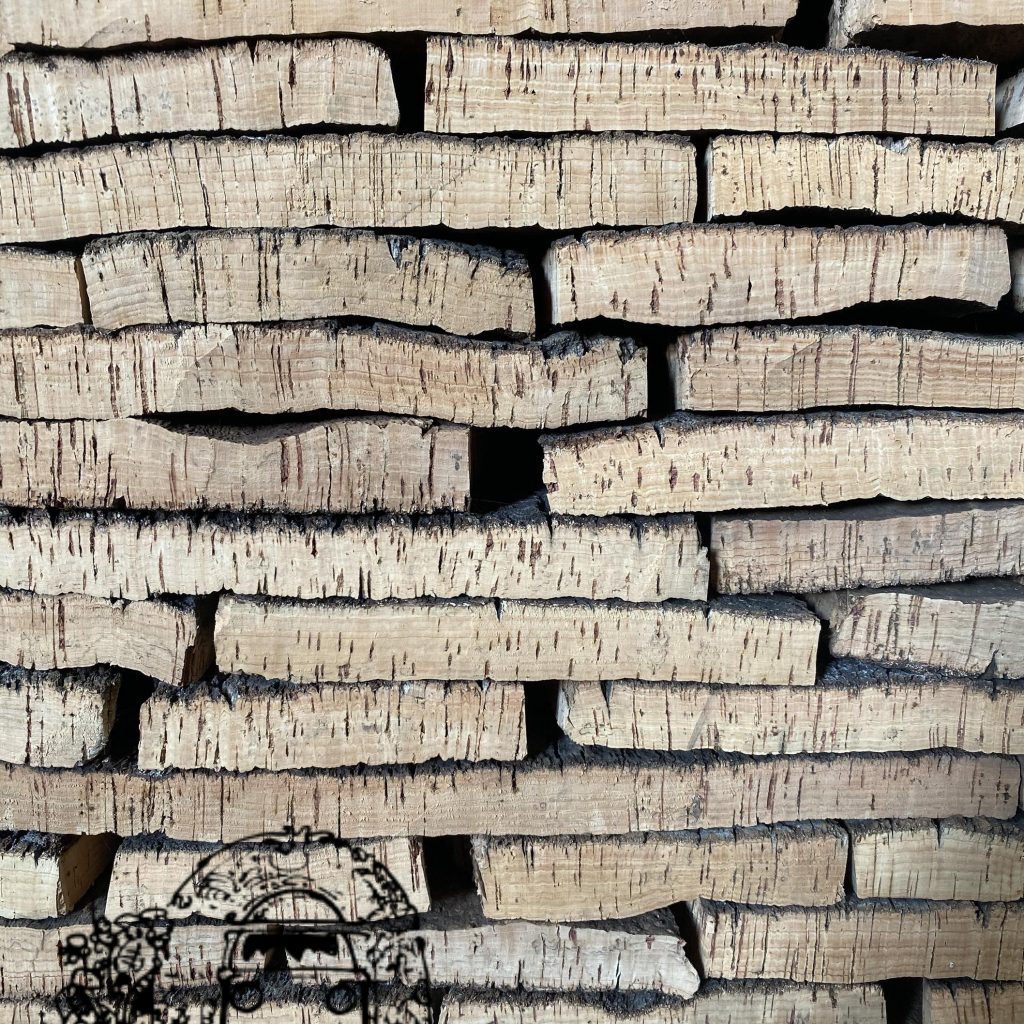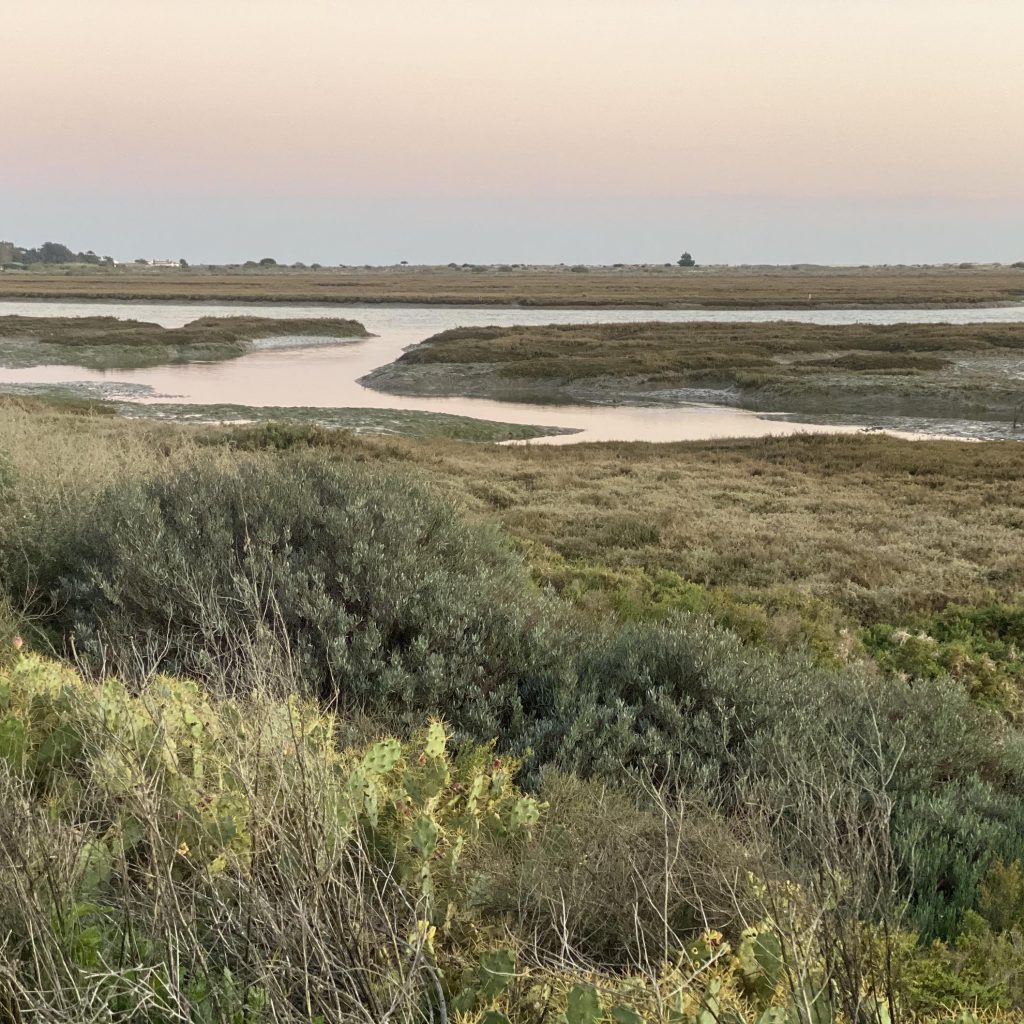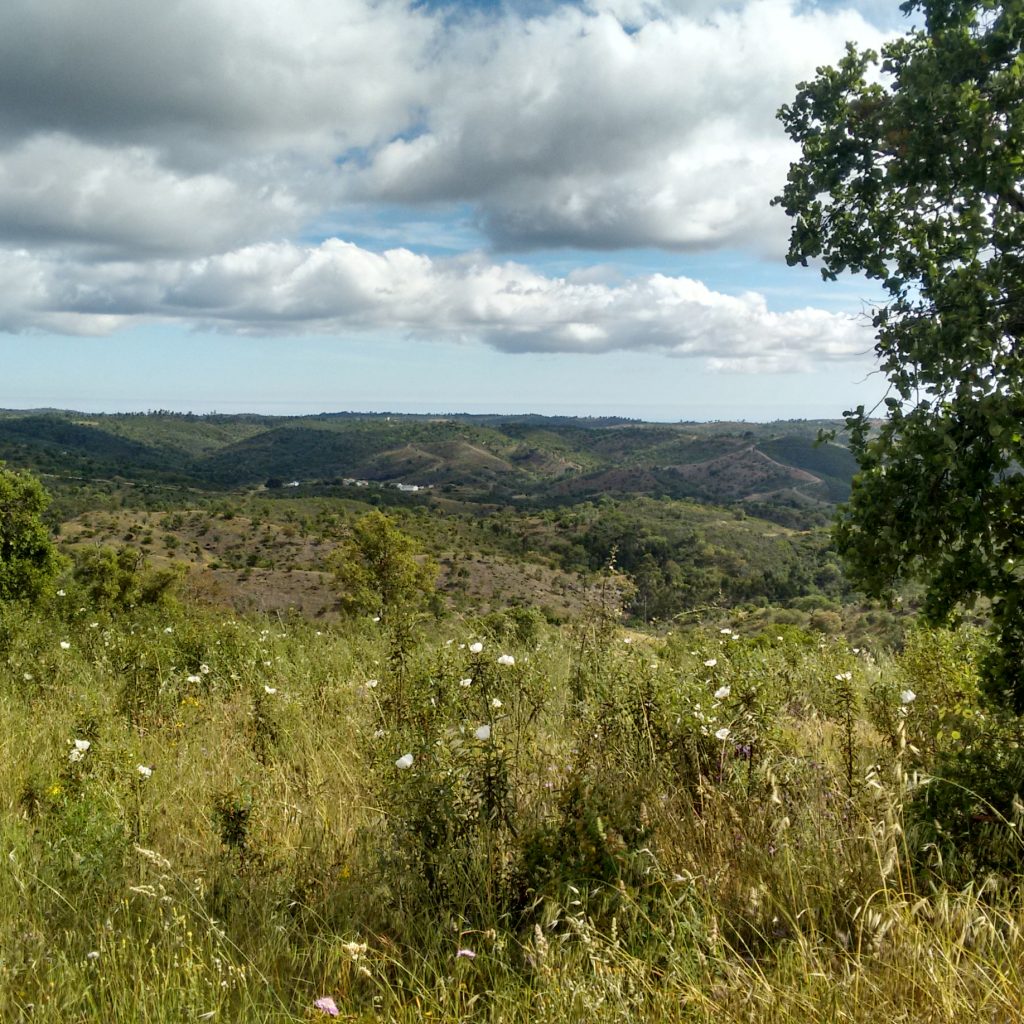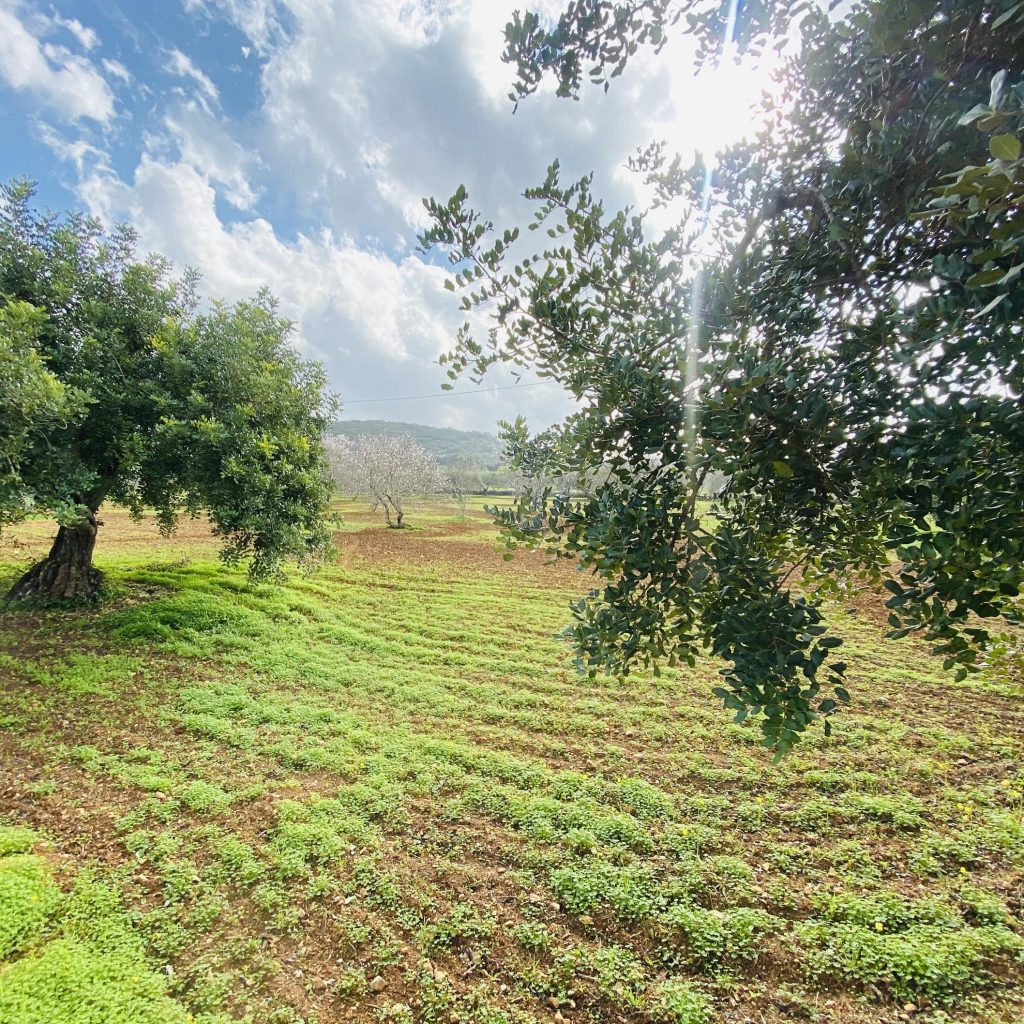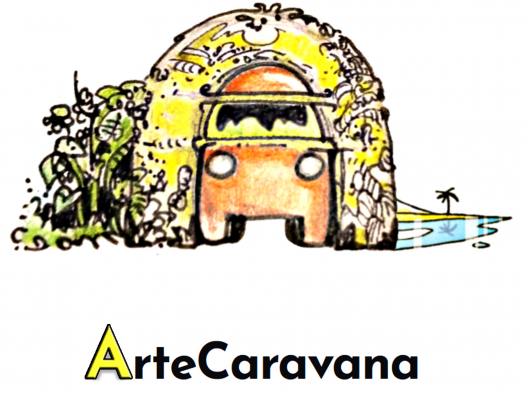
Leather handicraft straight from the workshop on four wheels
Wandering through Iberian lands
Algarve – the land of almonds, piri-piri, beautiful cliffs and strong winds. Last land recovered during Reconquista. Part 1: general information about the region.
12/03/2020 2:42 PM
algarve, guide, portugal, travelling, travels .
Today's entry will start a series about Algarve - Portugal's most-visited touristic area. Initially, it was supposed to be one article but it would have had over a dozen pages and we decided to divide it into smaller parts. The Algarve is a strip of land located in the south of Portugal. It has about 170 km from east to west: from the natural border with Spain, the Guadiana River, to Cape St. Vincent (the most southwestern Cape of continental Europe). From south to north it has only 40 km which gives us the area of 5.5 thousand square kilometers. There are only 450,000 inhabitants, however, the airport in Faro receives about 8 million tourists every year.
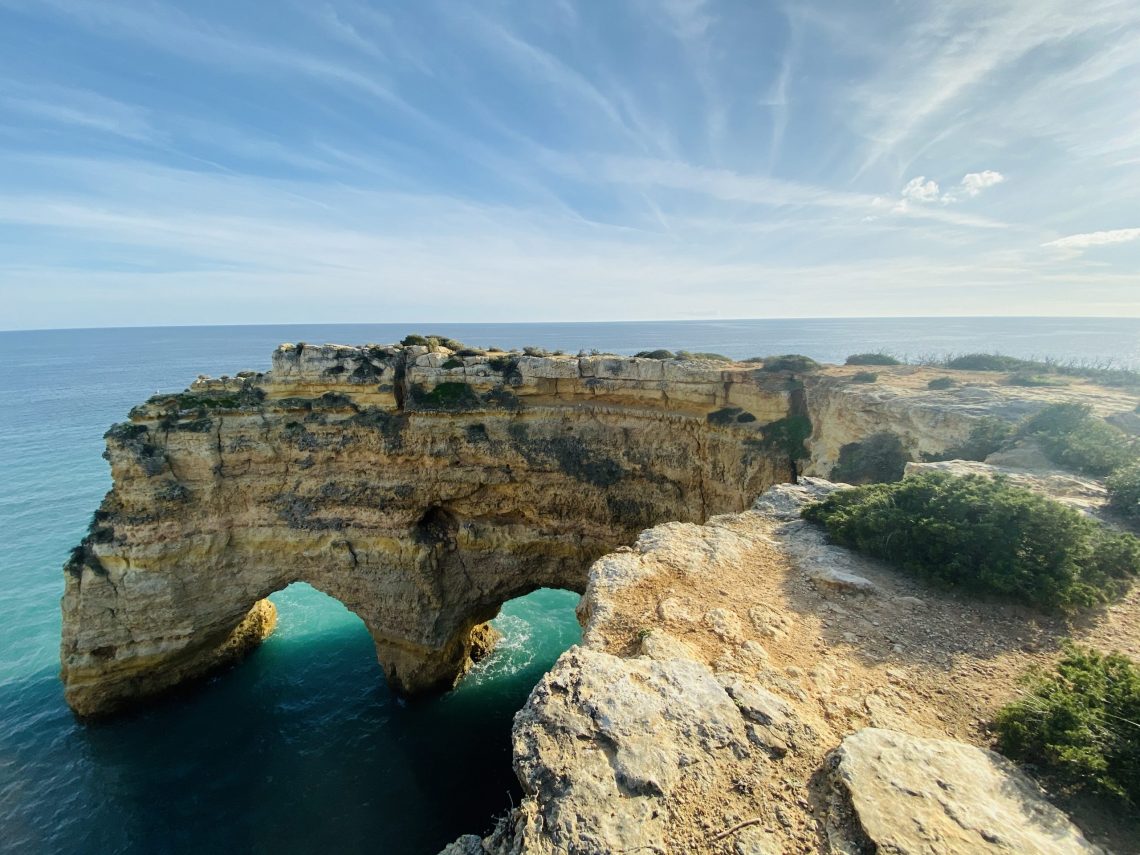
To understand this region better, we must go back for a moment to the year 711. That's when the Moorish commander Táriq ibn Ziyad enters the Iberian Peninsula. His name may sound familiar to you - Gibraltar was named after him - Jabal Tāriq or Jab al-Tarik – means the Rock / Mountain of Tariq. The Moors began conquering more and more lands, eventually almost all of today's Spain and Portugal got under their command. Only a few areas located in the north (part of Galicia, Basque Country) were never conquered. In the east, expansion was stopped by Charles Martel who defeated the Arab force in 732 in the Battle of Poitiers. Due to the fact that the Franks stopped the army, preventing them from crossing the Pyrenees, the Moors never reached eastern part of Europe, but they occupied almost the entire Iberian Peninsula for a very long time. Reconquista began quite quickly – already in the VIII century. Between the IX and XI Christians reconquered the northern regions, where Portugal had just began to exist - Porto in the year 868, Coimbra in 1064. However, the south had to wait longer. Moors stayed in Seville, Córdoba (Spain) or Faro for six centuries until the mid-thirteenth and were not driven out of Granada until the end of the XV century.
After reading this short introduction you already know that the Algarve is the region that remained under Arab rule for the longest time in Portugal. That's why here you will see the greatest Arab influences in the country, although still not much compared with neighboring Andalusia (Spain). It was in the Algarve that the last Moorish fortress fell, leaving Portugal with borders that we know today. The very name of this region comes from the Arabic language and means "west" or "land located in the west" (al-Gharb). Why exactly west if it lies in the south? Because for the Moors it was the western part of their Al-Andalus peninsula. It is worth remembering the Arabic episode in the history of Algarve because the Moorish influences are visible in architecture, food, place names, as well as in the words used in local dialects.
Portugal is often mistakenly called a Mediterranean country although all its shores are Atlantic. It's because the climate of the Algarve, which is the region mostly visited by foreign tourists, is the Mediterranean climate. In the summer, the water in the ocean is quite warm, the warmest in the autumn - you can expect about 20 ° C depending on place - the closer to the Mediterranean, the higher the temperature will be. When it comes to air temperatures, statistically the warmest month is August. The thermometer will show from 20 to even over 40 degrees. From our own experience we know that the weather in Portugal can be capricious - it may rain all the time in May, then a heat wave will come and a surprise chill in July! In winter, average temperatures oscillate around 12-15 ° C - there are days when at night they drop to three or even zero, but during the day this doesn't really happen.
The Portuguese often call the Algarve „abroad” - they are reluctant to spend their holidays there, they usually choose the coast of Alentejo or Arragem de Alqueva - The Great Lake resulting from the Alqueva Reservoirt, on the river Guadiana. It's quite a new spot but the hotel and water sports base is rapidly developing there. Certainly, this place is much less crowded in the summer than Algarve and that's where we meet the Portuguese relaxing during their holidays.
As we mentioned earlier, the airport in Faro receives 8 million tourists a year. However, this was not always the case! The development of this region started in the 1960s due to the policy of Salazar (who ruled the country from 1932). He noticed, that Portugal could offer an alternative for the crowded Spanish beaches. The region was reorganized and tourist infrastructure created (including the airport in 1965). Also the The N-125 road was built, connecting Galicia with Sagres (that means it goes through all of Portugal - actually that was the first touristis „road” in the country). In 1986, Portugal joined the EU, getting $ 9,000,000, of which 1/3 is invested in hotels in the Algarve. There are currently 100,000 "beds" there, which is 35% of all in Portugal. 2/3 of GDP in Algarve comes from tourism, in which 60% of all employed people find employment. In addition to tourism, agriculture (for example: lemons, oranges, almonds and fig fruit) as well as fishing and fish processing are also developed here. Portugal's wealth that we definately have to mention is cork. Algarve is not the most important region when it comes to the cultivation of the cork oak - it is the neighboring region of Alentejo, although here it grows as well. We have already written about cork, who has not read it yet – have a look here.
The Algarve is divided into three parts: the coast, the „uplands-lowlands” part of Berocal and the mountains. The coast has another two sub-regions which have the border in Albufeira. Albuferia is a very touristic city, there is a multitude of English bars there and you will have a chance to see undressed, bellied gentlemen pouring beer on themselves (or each other), and in the evening you can enjoy the latest radio hits in many clubs and discos open until dawn. If we go west from Albufeira we get to the region with the beautiful name Barlavento (Windward) with the unofficial capital in Portimão, and if to the east we arrive to Sotavento (Leeward) with the capital in Faro.
Sotavento has sandy beaches and a lot of wetlands. When we went to Portugal for the first time we only had a chance to visit this part of Algarve and to be honest we were rather disappointed - swamps, mosquitoes and flies everywhere and the rainy Faro (it was raining so much we were almost unable to leave the car so we spent all night playing HOMM3). There are, however, a few nice towns, which, if you get there at the right time and the weather is nice, you will probably find charming - Castro Marim, Olhão (we were lucky to experience a real portuguese motorcycle reunion there), Vila Real de Santo António and of course, probably our favorite in this region, Tavira with Black Anchor – a bar where you can listen to some nice live music, our buddy Gary Vesey plays there.
Barlavento has more to offer. Travel agencies love Albuferia and the neighbouring towns, so most often they offer hotels located nearby. The coast is no longer marshy and sandy, but full of cliffs – and it's just totally breathtaking. Albbufeira, in our opinion, is just another, typical, touristic „hole”. If you don't want gypsies to sell you fake drugs better don't go there.
It's definately better to start from Armação de Pêra and go west, where the most famous Algarve beaches and caves are situated. We will write about them soon, we promise! On the way to Cape St. Vincent you should also visit Lagos and Portimao. Cape St. Vincent is impressive for many reasons - there is a lighthouse that has the largest range in Europe - over 100km. Only one lighthouse keeper supports it. The wind there is just too strong but if you get there on a nice, cloudless day, the sunset should give you goosebumps. We've already been there three times and it's always windy as hell. The first time was probably the most memorable – the wind made it practically impossible to get out of the car. By the Romans it was called the Holy Cape because, according to their beliefs, the sun sank there into the ocean, marking the edge of their world. Sailors call this place the cape of warm trousers because of the warm and cold currents that meet there.
Moving away from the coast we get to Silves, which resisted the longest during the reconquista. The mountainous part of the Algarve is located on its northern border, from the side of Alentejo. Serra de Monchique is a volcanic mountain range, fertile soil makes it very green there but I wouldn't call it mountains, rather hills, because the highest peak is not even 1000m high. This part is full of cork oaks, olive trees, almonds, figs, oranges and also medronho - a traditional fruit brandy obtained from the fruit of that tree kicks better than LSD. Eucalyptus also grows here but it grows everywhere around Portugal. It was imported for the purpose of making paper but it turned out to be ... an ordinary weed.
If you are planning to buy a house in Algarve, I recommend a vineyard that Cliff Richards has been trying to sell for some time - Adega do Cantor, which is a part of the entire property put up for sale. Initially, the price reached EUR 12 million but nobody was tempted, in 2016 it was already 9.4 million and in 2017 6.5 million. I don't know if he managed to get rid of it, but maybe you will be lucky. Welcome to Portugal!
This post opens a series about Algarve. Soon we will tell you more about this beautiful region, about our favorite places, what Algarve is famous for and what to eat here. For all the vanlifers we also have some tips, some nice parking where you can stay overnight „in the wild” without problems but with a beautiful view!
The entire series of articles about Algarve:
Cork – the (natural) national treasure of Portugal
